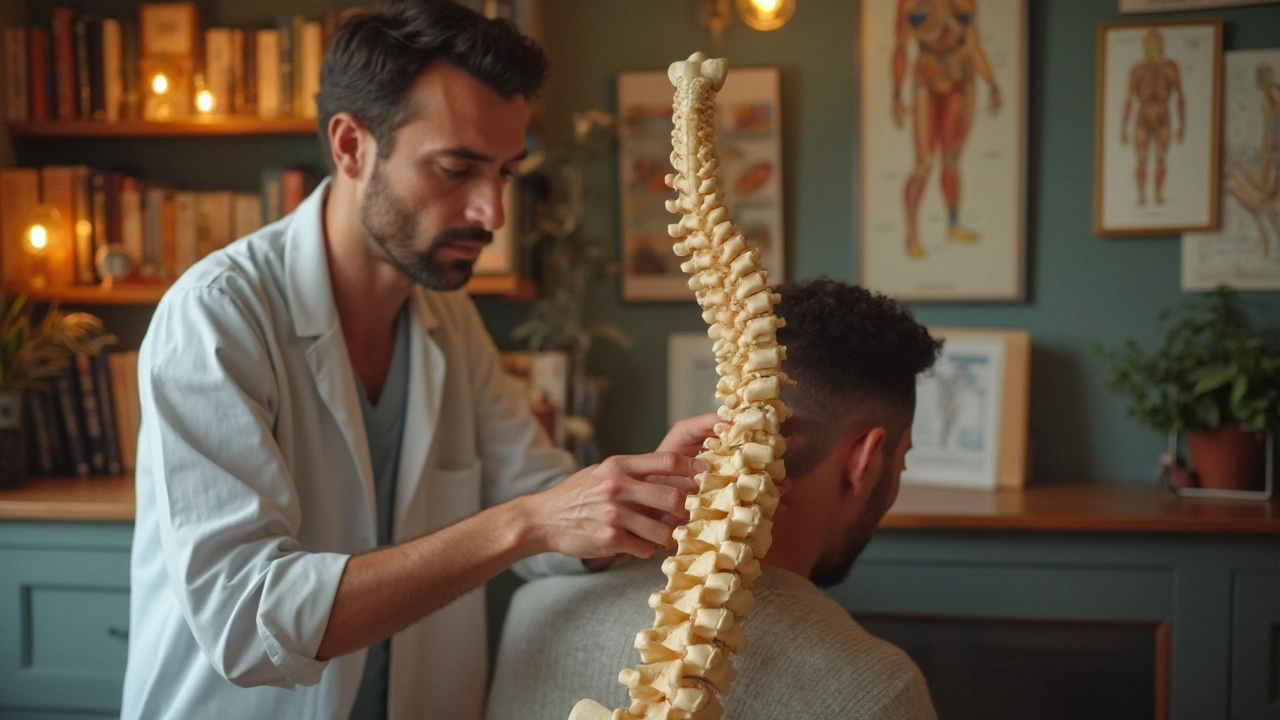Spinal adjustment: a practical guide
Spinal adjustment—also called spinal manipulation—is a hands-on treatment used for back and neck pain. You might have heard a popping sound during a session. That noise is normal and comes from gas bubbles releasing in a joint. The goal is to restore normal movement, reduce pain, and help you move easier.
What happens during an adjustment
Most adjustments take a few minutes. The clinician (a chiropractor, osteopath, or some physical therapists) positions your body and gives a quick, controlled thrust to a joint. It can be done while you lie on a table or sit. Practitioners may also use low-force techniques, instruments, or gentle mobilization if you prefer less force.
Before any hands-on work, expect a short history and movement check. The therapist will ask about pain location, medical history, and any red flags like numbness, fever, or recent injury. If something concerning shows up, they should refer you for imaging or to another provider.
Benefits, risks, and when to try it
For many people with low back or neck pain, spinal adjustment gives quick pain relief and improves mobility. Systematic reviews including Cochrane-type analyses show spinal manipulation can provide small to moderate short-term benefits for acute low back pain. It’s often used alongside exercise, posture advice, and soft tissue work.
Risks are usually mild: soreness, tiredness, or a temporary increase in pain for a day or two. Serious complications are rare but possible, especially with neck manipulation—so screen for stroke risk, severe osteoporosis, or blood clotting disorders first. If you have severe or progressive neurological signs (weakness, loss of bladder/bowel control), go to urgent care instead of booking an adjustment.
Try spinal adjustment if you have mechanical back or neck pain without red flags and you want a non-drug option that may speed recovery. Many people combine adjustments with targeted exercises and ergonomic fixes for longer-lasting results.
What to ask before your first session: Are you licensed? How many adjustments do you expect? Do you use low-force options? What should I do afterward—any exercises or activity restrictions? A good clinician gives clear answers and a short plan, not endless sessions without goals.
Home care that helps after an adjustment: stay active with light walking, use heat for tight muscles, try gentle stretches your therapist recommends, and work on posture during sitting or at a desk. If pain gets steadily worse or you develop numbness, stop and seek medical review.
Spinal adjustment isn’t a miracle cure, but it’s a valid tool for many people with mechanical back or neck pain. When combined with exercise and sensible habits, it can speed recovery and help prevent flare-ups. Ask questions, choose a licensed provider, and expect clear guidance—not promises.





